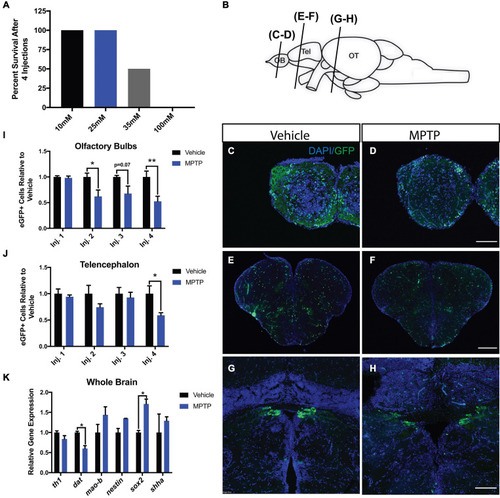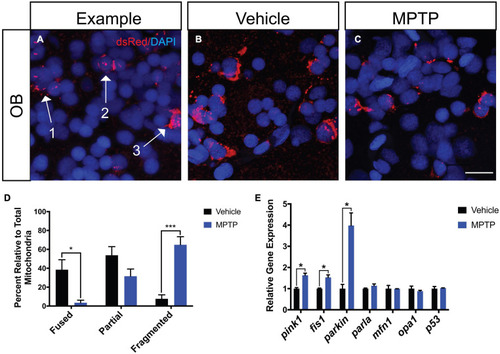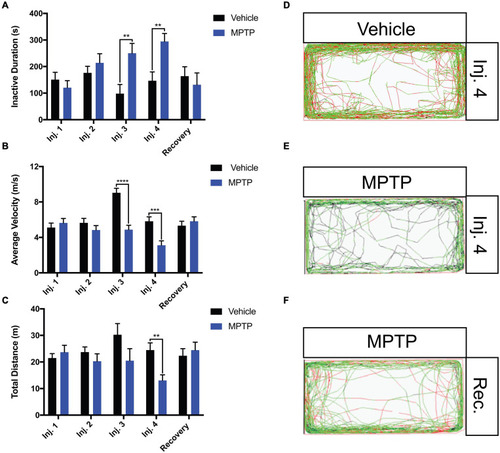|
Impact of MPTP on various brain regions of adult Tg( |
|
Effect of MPTP on mitochondrial fission-fusion dynamics in Tg( |
|
Impact of MPTP on adult zebrafish swimming behavior. Fish were acclimated to the apparatus for 15 min prior to behavioral analyses. Seven-minutes trials were performed. |
|
Impact of MPTP on olfactory response in adult zebrafish. |




